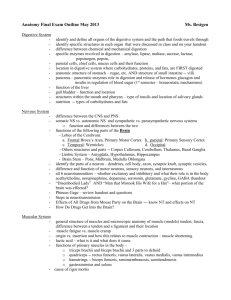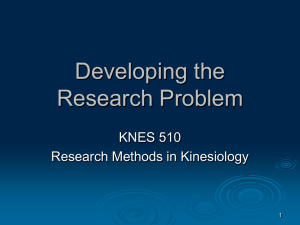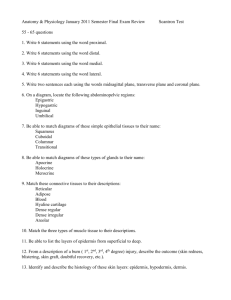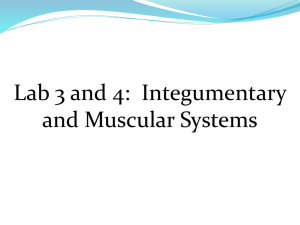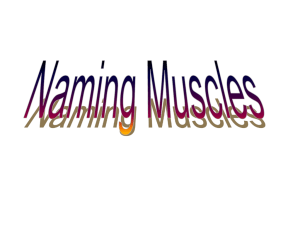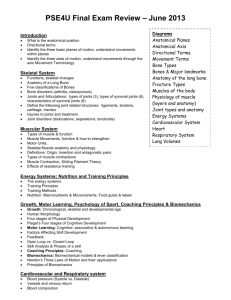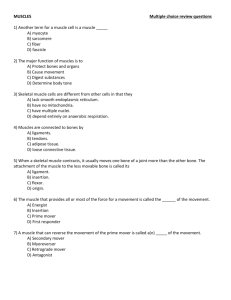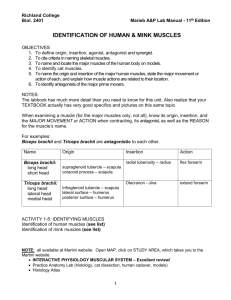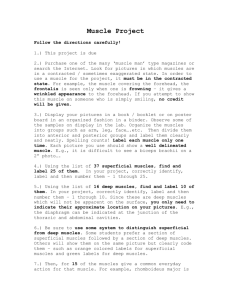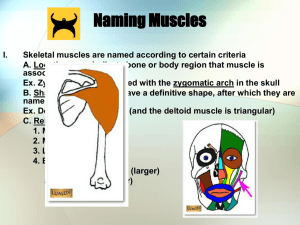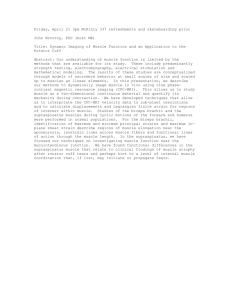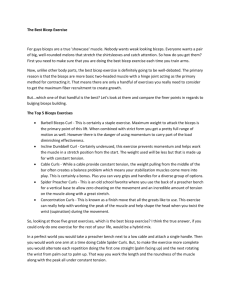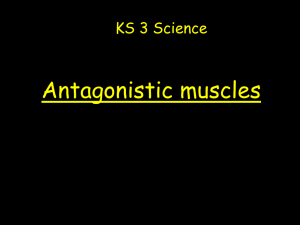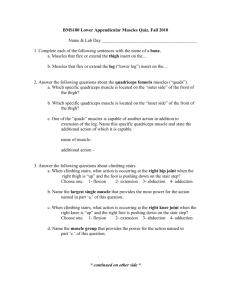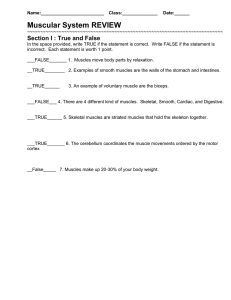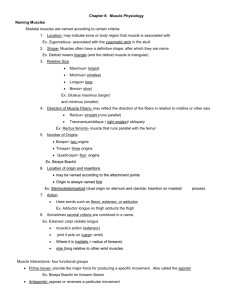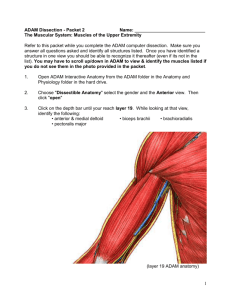Basic Anatomy and Movement
advertisement
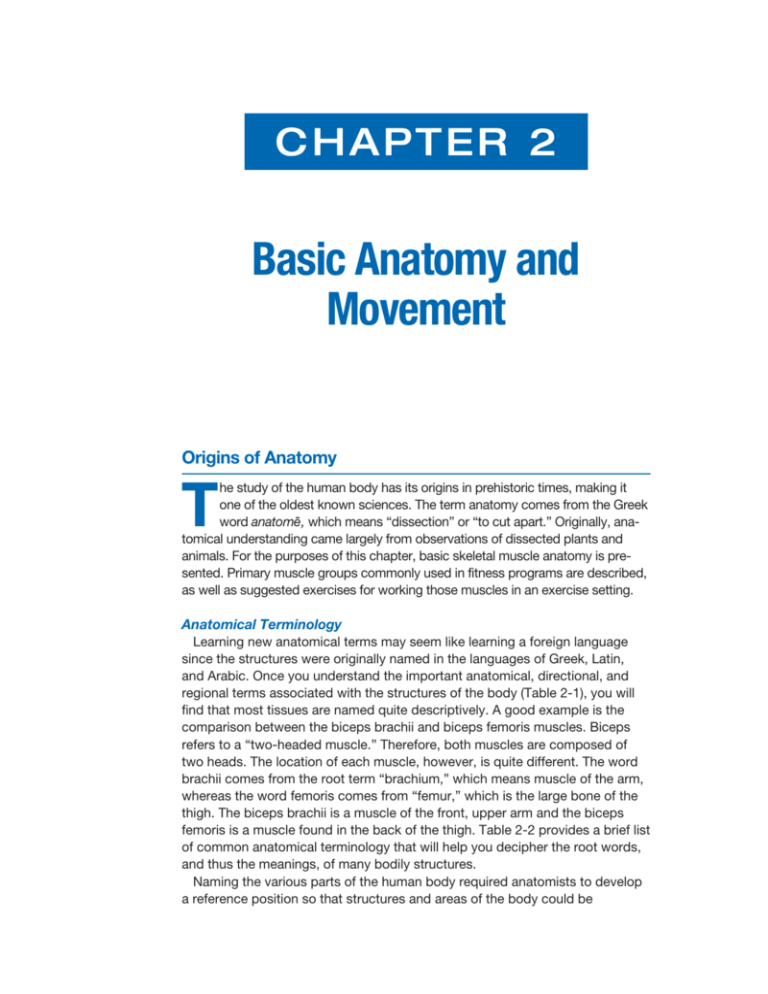
Chapter 2 Basic Anatomy and Movement Origins of Anatomy T he study of the human body has its origins in prehistoric times, making it one of the oldest known sciences. The term anatomy comes from the Greek word anatome-, which means “dissection” or “to cut apart.” Originally, anatomical understanding came largely from observations of dissected plants and animals. For the purposes of this chapter, basic skeletal muscle anatomy is presented. Primary muscle groups commonly used in fitness programs are described, as well as suggested exercises for working those muscles in an exercise setting. Anatomical Terminology Learning new anatomical terms may seem like learning a foreign language since the structures were originally named in the languages of Greek, Latin, and Arabic. Once you understand the important anatomical, directional, and regional terms associated with the structures of the body (Table 2-1), you will find that most tissues are named quite descriptively. A good example is the comparison between the biceps brachii and biceps femoris muscles. Biceps refers to a “two-headed muscle.” Therefore, both muscles are composed of two heads. The location of each muscle, however, is quite different. The word brachii comes from the root term “brachium,” which means muscle of the arm, whereas the word femoris comes from “femur,” which is the large bone of the thigh. The biceps brachii is a muscle of the front, upper arm and the biceps femoris is a muscle found in the back of the thigh. Table 2-2 provides a brief list of common anatomical terminology that will help you decipher the root words, and thus the meanings, of many bodily structures. Naming the various parts of the human body required anatomists to develop a reference position so that structures and areas of the body could be

